
Esta es una lección virtual acerca de algunos tipos de colecciones biológicas y su uso como estrategia de enseñanza aprendizaje de las Ciencias Naturales

Esta es una lección virtual acerca de algunos tipos de colecciones biológicas y su uso como estrategia de enseñanza aprendizaje de las Ciencias Naturales
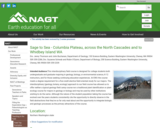
This transect across northern Washington State was one of our most geologically and biologically diverse field trips. The trip started with a drive across the relatively uniform basalt flows of the Columbia plateau and then traversed the extremely geologically complex North Cascades accessible from a scenic route through the small, and relatively less-traveled, North Cascades National Park. Steep gradients in elevation annual precipitation and winter temperatures revealed equally dramatic changes in vegetation from cold desert shrub lands to temperate coastal rain forests. Like previous trips, this one allowed students to observe glacial processes up close and trace the history of plant succession as glaciers retreat.
(Note: this resource was added to OER Commons as part of a batch upload of over 2,200 records. If you notice an issue with the quality of the metadata, please let us know by using the 'report' button and we will flag it for consideration.)
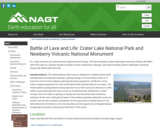
The goal of this class was to explore the natural history of the southern part of the Cascade Range in Oregon. We discussed the complex geologic setting of the range and focused primarily on volcanic features, geologic history and landscape evolution. Adaptation of organisms to desert, alpine and forest habitats were investigated, as well as the spatial and temporal factors that influenced plant species distribution. We spent most of our time exploring Crater Lake National Park and Newberry Volcano National Monument during this immersive field experience..
(Note: this resource was added to OER Commons as part of a batch upload of over 2,200 records. If you notice an issue with the quality of the metadata, please let us know by using the 'report' button and we will flag it for consideration.)

Open access textbook about paleontology for advanced high school and introductory level college students.https://www.digitalatlasofancientlife.org/learn/

Introduction to Paddy cultivation, Morphology of the Paddy plant, Geotropical Distribution, Rice Cultivation, Processing of Pappy to Rice, Economic importance of Rice, Golden Rice, Varieties of Rice Dishes.
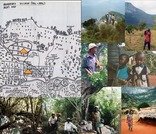
This module provides descriptive notes and images that can support teaching and learning about ethnobotany and landscape ethnoecology, or the integrative study of human-resource relationships. The photos and graphics are mostly derived from field study and research at Mt. Kasigau, Kenya (1999-2015) as a case example. I openly make them available through the OER site for educational purposes. The resources attached to the module include:I. Ethnobotany- descriptive notes and images (ethnobotany_notes_oer) and a powerpoint presentation (ethno_div_oer);II. Landscape Ethnoecology- descriptive notes and images (landscape_ethnoecology_oer) and a powerpoint presentation (landscape_ethno_oer);III. Participatory Inquiry in Ethnobotany and Landscape Ethnoecology- descriptive notes and images (ethno_participatory_oer) and a powerpoint presentation (ethno_process_outcome_oer);IV. Collaborative Field Guide to Woody Plants and their Uses at Mt. Kasigau, Kenya (kasigauplantbook_may2013.pdf)

This resource is a video abstract of a research paper created by Research Square on behalf of its authors. It provides a synopsis that's easy to understand, and can be used to introduce the topics it covers to students, researchers, and the general public. The video's transcript is also provided in full, with a portion provided below for preview:
"Exotic species are a big problem worldwide. While the mechanisms of invasion vary from one exotic species to the next, researchers can tease out patterns that are useful for understanding and ultimately managing invasion. A new study published in the Journal of Biogeography reveals how one team has applied an emerging method known as the phylogenetic field approach to do just that for exotic plants in Japan. The results offer critical insight into how ecology and evolution influence the dynamics of invasion. Darwin’s On the Origin of Species marked the first time biological invasion had been addressed using the principles of evolutionary ecology. But followed to their logical end, these principles yielded two contradictory hypotheses. The pre-adaptation hypothesis states that exotic species successfully colonize assemblages with native species that are ecologically similar because both require the same set of environmental conditions to thrive..."
The rest of the transcript, along with a link to the research itself, is available on the resource itself.

This resource is a video abstract of a research paper created by Research Square on behalf of its authors. It provides a synopsis that's easy to understand, and can be used to introduce the topics it covers to students, researchers, and the general public. The video's transcript is also provided in full, with a portion provided below for preview:
"Africa contains some of the most species-rich regions in the world. The tropical zone of this continent, for example, harbors the second largest extent of rain forest after the Amazon basin. However, tropical Africa is in the midst of major ecological shifts in response to human pressure and global climate change. Unfortunately, an incomplete understanding of plant diversity in this fragile region may hinder conservation efforts. In an attempt to remedy this, an international team of scientists created the RAINBIO database, a compilation of data gathered from the vast worldwide network of herbaria – or libraries of dried plant specimens. The researchers analyzed over 600,000 specimens for collecting date, geographic occurrence, and growth form (think: trees, herbs, and vines). The results provide an important perspective on plant species richness across the African tropics. For example, Cameroon, Tanzania, and the Democratic Republic of Congo are estimated to be the most species-rich countries..."
The rest of the transcript, along with a link to the research itself, is available on the resource itself.
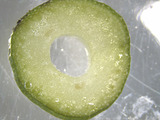
Fennel. Cross section stem. 8XImage and content credit: Fernando Agudelo-Silva.
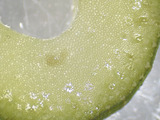
Fennel stem. 17XImage and content credit: Fernando Agudelo-Silva
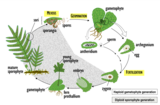
This illustration shows the life cycle of a typical fern and includes alternation between the sporophyte and gametophyte generations.
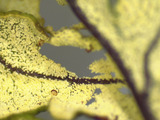
Golden back fern. Back of pinnae.Image credit: Fernando Agudelo-Silva
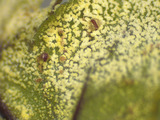
Golden back fern. Back of pinnae.Image credit: Fernando Agudelo-Silva

Leaders in the field of biological diversity present an overview of emergent issues in biodiversity, from the surrounding flora and fauna to the genes deep within us. (117 minutes)
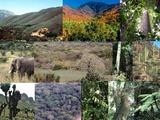
This module focuses on the description of different vetation types that may be of use as part of an introductory physical geography course (biogeography), or for a class focused on the study of plants and vegetation. All images were collected from travels to learn about vegetation over the past 40 years and I openly make them available through the OER site. The resources attached to the module include:I. Description of terms used to describe and distinguish among global vegetation types (biomes)- descriptive notes and imagesII. Tropical Vegetation Types- descriptive notes and powerpoint slide showIIIl Subtropical_Temperate_Arctic Vegetation Types- descriptive notes; powerpoint slide show; supportive lists for desert and montane species.

BCC Bioscience Image Library is a media file repository of images and video clips made available to educators and students in the biological sciences. The resources are created by faculty, staff and students of Berkshire Community College and are licensed under Creative Commons 0. This means all content is free, with no restrictions on how the material may be used, reused, adapted or modified for any purposes, without restriction under copyright or database law.
This project was partially funded by a $20,000,000 grant awarded by the U.S. Department of Labor’s Employment and Training Administration, Grant # TC-26450-14-60-A-25. The product was created by the grantee and does not necessarily reflect the official position of the U.S. Department of Labor. The U.S. Department of Labor makes no guarantees, warranties, or assurances of any kind, express or implied, with respect to such information, including any information on linked sites and including, but not limited to, accuracy of the information or its completeness, timeliness, usefulness, adequacy, continued availability, or ownership.
If you have any questions contact professor Faye Reynolds at: freynold@berkshirecc.edu

This resource is a video abstract of a research paper created by Research Square on behalf of its authors. It provides a synopsis that's easy to understand, and can be used to introduce the topics it covers to students, researchers, and the general public. The video's transcript is also provided in full, with a portion provided below for preview:
"Chloroplasts harness sunlight to power all the processes that help plants grow. Like engines, they must carefully balance their fuel to run efficiently. In plants, that’s the ratio of ATP to NADPH, two forms of fuel produced by photosynthesis. But scientists have long known that ATP/NADPH ratios in chloroplasts fall short of the value required for plants to turn CO₂ into sugars. To find out how plants overcome this imbalance, researchers tracked ATP in Arabidopsis plants in real time using a fluorescent protein sensor. They found that immature chloroplasts in young seedlings imported cytosolic ATP for chloroplast biogenesis, using an abundance of ATP transporter proteins to do the job, but mature chloroplasts downregulated these transporters to minimize ATP importation. Instead of importing ATP to maintain fuel balance, chloroplasts exported NADPH in the form of malate..."
The rest of the transcript, along with a link to the research itself, is available on the resource itself.

nanimate Life is an open textbook covering a very traditional biological topic, botany, in a non-traditional way. Rather than a phylogenetic approach, going group by group, the book considers what defines organisms and examines four general areas of their biology: structure (size, shape, composition and how it comes to be); reproduction (including sex when present); energy and material needs, acquisition and manipulations; and finally their interactions with conditions and with other organisms including agricultural interactions between plants and people. Although much of the text is devoted to vascular plants, the book comparatively considers ‘EBA = everything but animals’ (hence the title): plants, photosynthetic organisms that are not plants (‘algae’, as well as some bacteria and archaebacteria), fungi, and ‘fungal-like’ organisms. The book includes brief ‘fact sheets’ of fifty-nine organisms/groups that biologists should be aware of, ranging from the very familiar (corn, yeast, pines) to the unfamiliar (cryptophytes, diatoms, late-blight of potato). These groups reflect the diversity of inanimate life.
This updated edition was published in July 2022 and includes corrections, revisions, additional figures, and fact-sheets for several more groups.

This investigation begins with a phenomenon that is evidenced in most every produce aisle: Many of the vegetables that botanists classify as Brassica look and taste different. This investigation aligns with middle and high school Next Generation Science Standards as well as with agricultural science Plant Career Path Standards. Provided as an Open Source Lesson in Gather-Reason-Communicate format, this investigation supports teachers as students learn about the life cycle of flowering plants, how environmental and genetic factors influence an organisms's growth, how humans influence plants through plant breeding, and how scientists can use classification as a tool for understanding relatedness among organisms. This includes a lesson plan and supporting resources including videos, an interview, readings, and protocols.

Drawings and visualizations are used to help participants conceptualize the location and steps involved in the light reactions of photosynthesis. The drawsing include light reactions of photosynthesis including location and steps for non-cyclic and cyclic photophosphorylation.